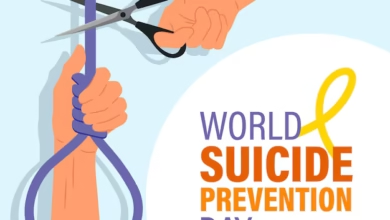Lead Poisoning in Children — The Facts, the Law, and the Path to Prevention

Every year, thousands of Ohio children test positive for elevated blood-lead levels, more than twice the national average. The true number is even higher, as many children are never tested. Lead exposure is not only a public health issue but a lifelong sentence for many families, with effects ranging from developmental delays to irreversible brain damage.
With more than 745,000 lead service lines still carrying drinking water into Ohio’s homes, schools, and workplaces, the third highest in the nation hence the risk is far from gone.
The New Legislative Push
House Bill 307, known as the Lead Line Replacement Act, proposes replacing every publicly owned lead service line in Ohio within the next 15 years. Sponsored by Rep. Dontavius Jarrells (D-Columbus), the bill aims to protect communities from what he calls “a very silent killer.”
Jarrells speaks from experience. As a child, he suffered lead poisoning from peeling paint at his grandmother’s home, an injury that robbed him of his clear speech for years. His story highlights a key truth: whether from paint or water, the damage is the same — permanent harm to a child’s developing brain.
Ohio’s Lead Problem — By the Numbers
- 5.2% of Ohio children have elevated blood-lead levels — more than twice the 1.9% national rate (JAMA Pediatrics study).
- Ohio ranks second in the U.S. for the proportion of children with elevated lead levels.
- 19,000 children under age six in Ohio have unsafe lead levels in their blood.
- Only 5,700 of these children have been officially identified — largely due to under-testing by healthcare providers.
Why Lead is So Dangerous
Lead is a neurotoxin, meaning it attacks the nervous system, particularly in children. Even tiny amounts can cause:
- Developmental delays and learning difficulties
- Speech and hearing problems
- Behavioral issues, irritability, and fatigue
- Seizures at high exposure levels
There is no safe level of lead exposure for children. Damage to the brain and nervous system is often permanent.
Sources of Lead in Ohio Homes
- Lead-based paint in homes built before 1978
- Lead-contaminated dust from deteriorating paint or soil
- Lead service lines and plumbing fixtures
- Contaminated soil near highways or older buildings
- Imported pottery, toys, or cosmetics containing lead
The Cost and the Payoff
Replacing all lead service lines in Ohio is estimated to cost $5 billion. Critics question funding, but research shows every $1 invested yields $32–$45 in public health and economic benefits. That means fewer cases of ADHD, reduced infant mortality, higher IQ scores, and improved workforce productivity.
What You Can Do Now to Protect Your Family
While lawmakers debate funding and timelines, families can take immediate action:
- Get children tested — especially if you live in an older home or high-risk area.
- Run cold water for at least one minute before drinking or cooking if you have older plumbing.
- Never use hot tap water for baby formula or cooking.
- Regularly wash children’s hands and toys to reduce dust ingestion.
- Wipe down dusty surfaces and wet-mop floors instead of sweeping.
- Cover bare soil in play areas with grass or mulch.
- Provide a diet rich in calcium, vitamin C, and iron, which can reduce lead absorption.
- Repair peeling paint safely — avoid dry sanding or scraping.
The Bigger Picture
The U.S. Environmental Protection Agency is proposing a nationwide 10-year deadline to remove lead service lines, but Ohio advocates warn that political changes could stall or reverse federal action. That’s why HB 307 matters: it locks in a state-level commitment to removing lead pipes, protecting future generations no matter who’s in office.
Conclusion
Lead poisoning is entirely preventable. The solutions exist. The science is clear. The cost of inaction will be paid in lost potential, lifelong disabilities, and broken futures.





